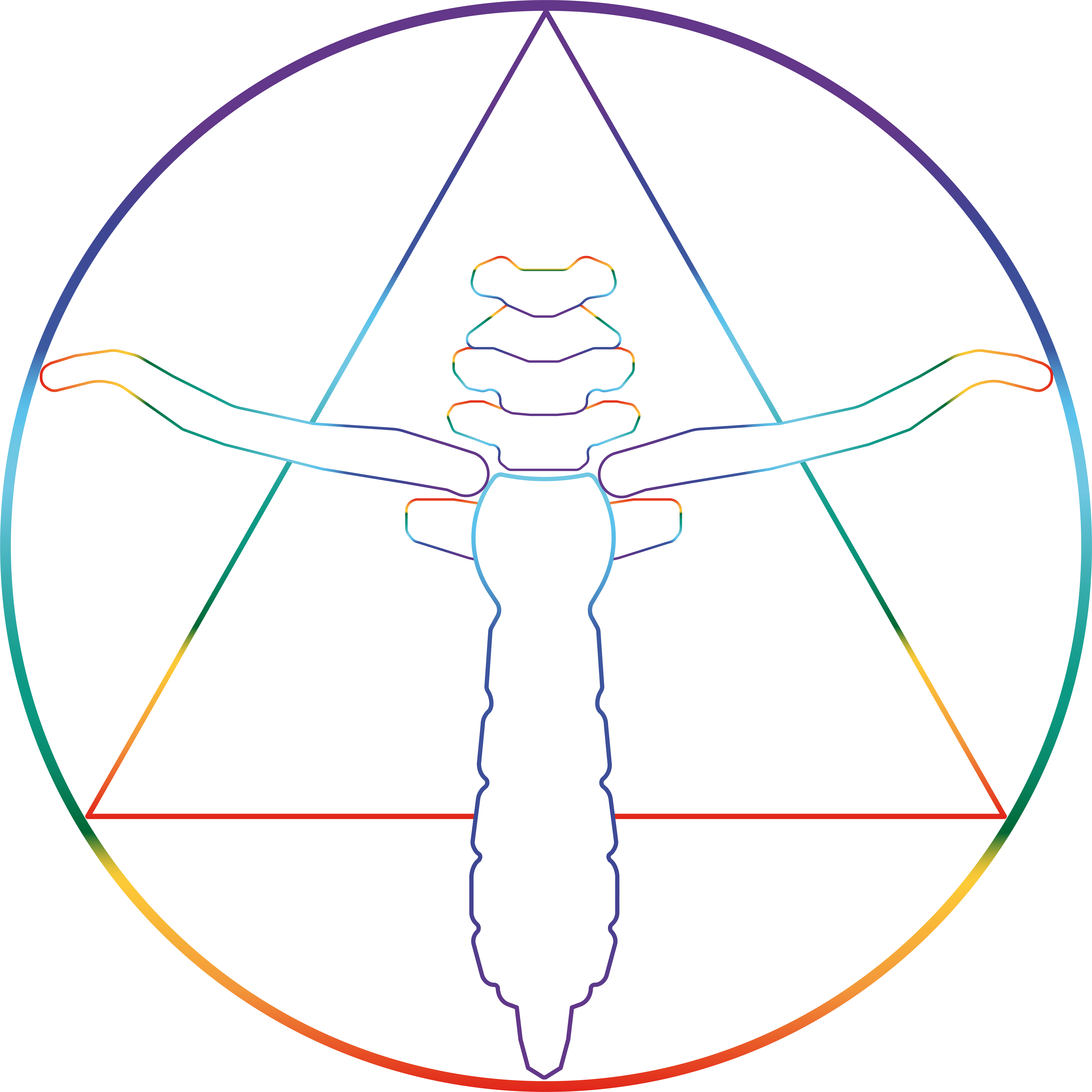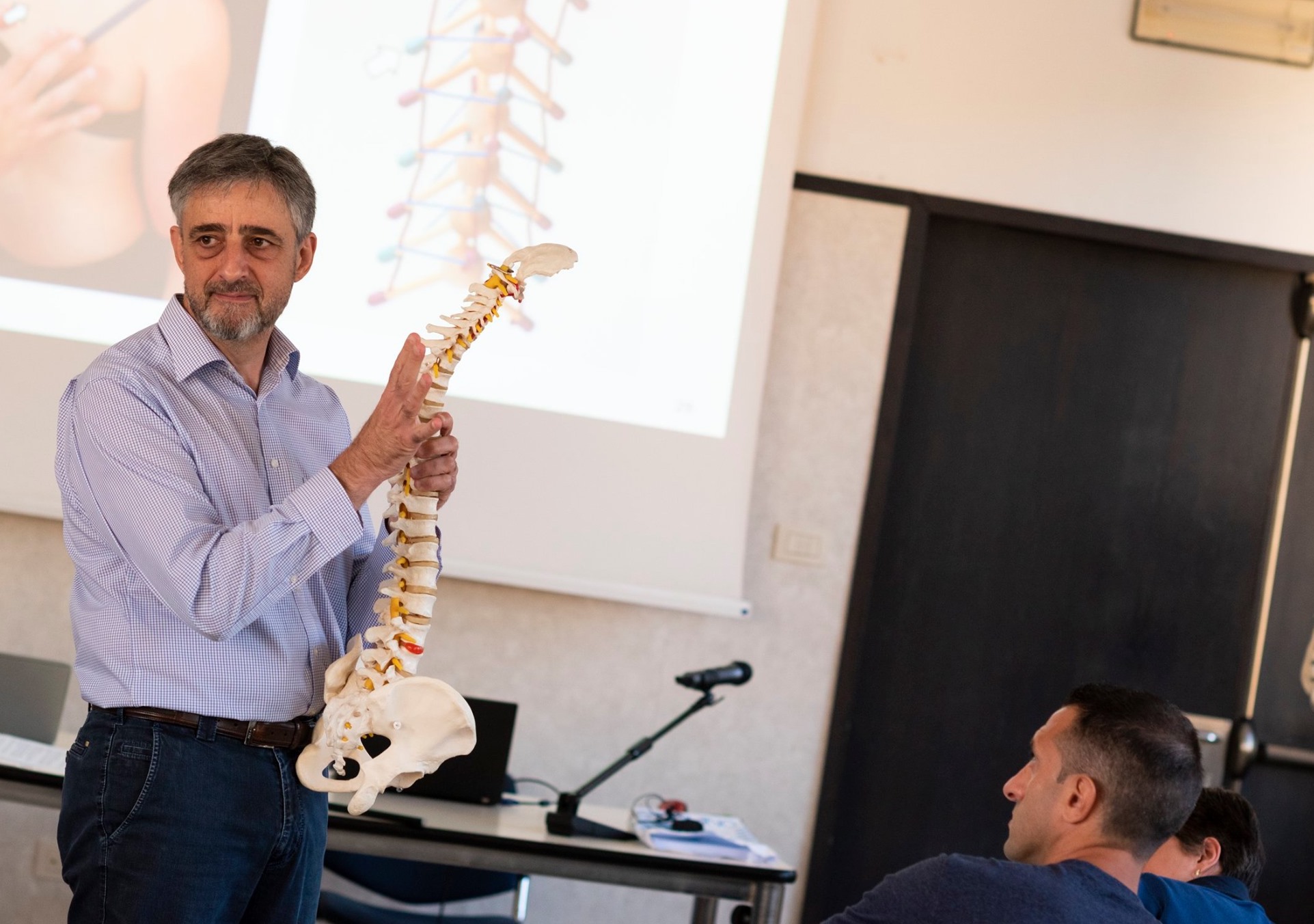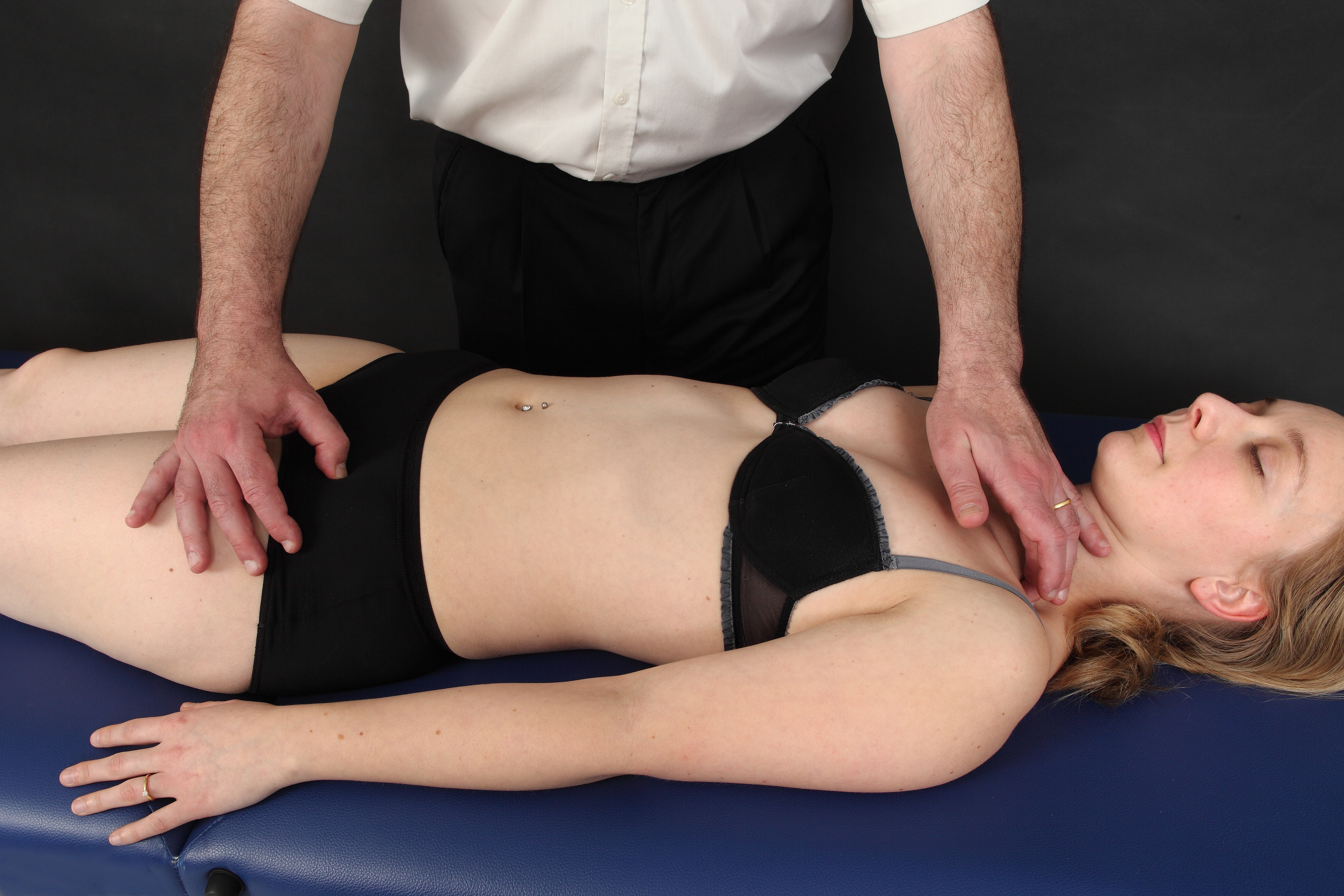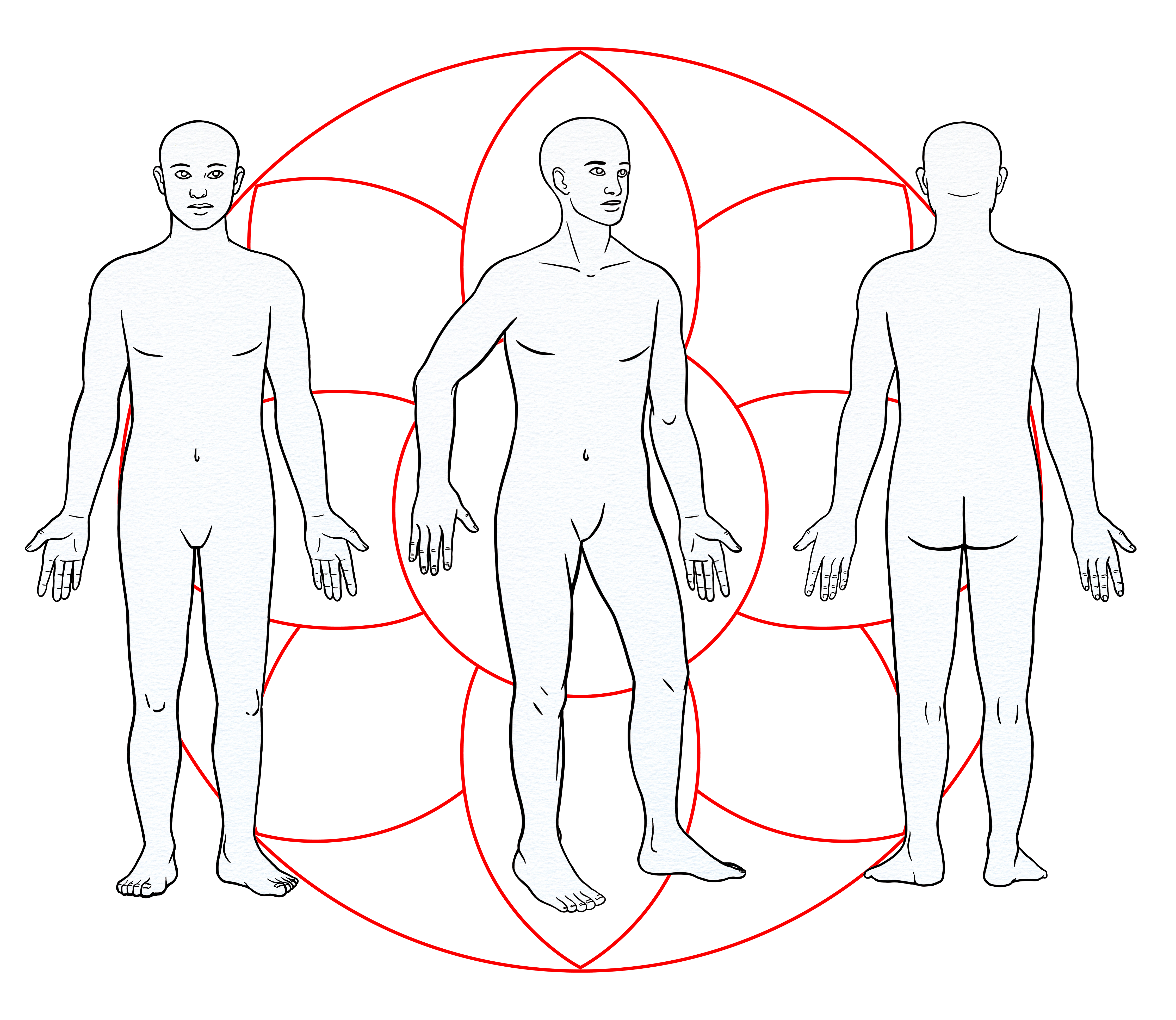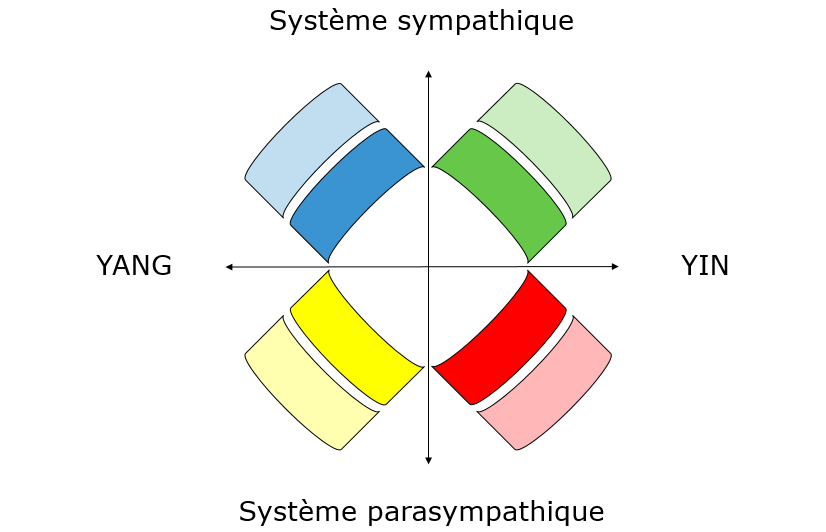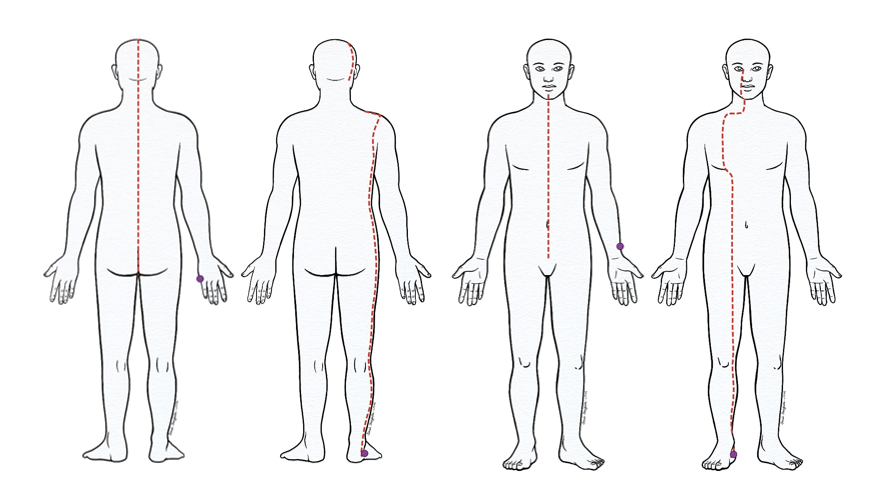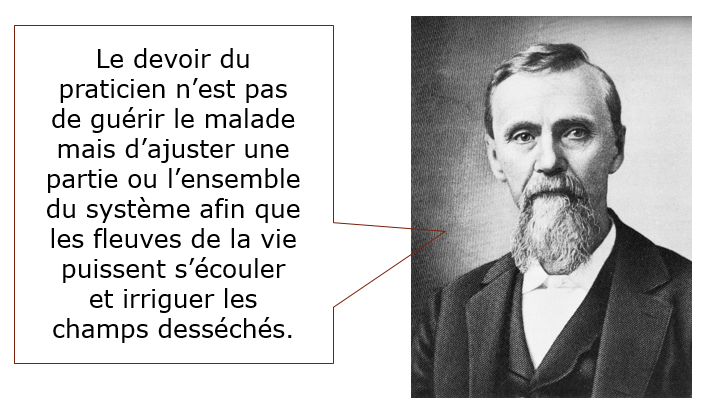LMO is an open method which continuously offers new perspectives.
Over the last years, we have therefore largely exceeded the field of alleged functional problems to successfully address so-called organic pathologies: heart rhythm issues, hiatal hernias, gallstones and kidney stones, restless leg syndrome, retroversion of the uterus, endometriosis, certain infections (sinusitis, cystitis), certain hormonal issues (hypothyroid, menopause), etc.[1] Likewise, all orthopaedic or surgical interventions that were avoided as a result of LMO treatments show the possibilities of osteopathy with regard to structural lesions: plagiocephaly, congenital torticollis, carpal tunnel, trigger finger, scapulohumeral periarthritis with partial tear of the rotator cuff, disc herniation, lumbar spinal stenosis, scoliosis[2], dysmorphoses related to growth (pectus carinatum/excavatum, leg length difference, genu varum/valgum, etc.), osteoarthritis of the hip joint, osteoarthritis of the knee joint, hallux valgus, Morton syndrome, etc. And when surgery is found to be necessary, our intervention often prevents or solves a number of postsurgical complications: reflex sympathetic dystrophy, keloid scars, painful sequalae following orthopaedic surgical interventions, herniorrhaphies, vein stripping, etc.
In another field, through an original and very specific approach of the vestibular system that we recently developed, it became possible to more efficiently treat postural imbalances and thus improve the duration of results concerning the majority of musculoskeletal complaints[3].
Technically speaking, as a complement to the prioritised treatment that is the norm, two other approaches[4] have widened our scope of action.
Regulation which consists of systematically treating all lesions, whether active or passive[5], in a given system. Ex: regulation of the two brains (encephalon and intestines), regulation of the key points of the nervous system (major points of acupuncture), regulation of the hormonal system (arteries and endocrine glands), regulation of return circulation (diaphragm, venous and lymphatic system), etc.
Combined treatment which consists of simultaneously treating two osteopathic lesions present in a patient. Ex: adjustment of a neural point with a vertebra (nerve root impingement), adjustment of a point of the temporal bone with C1 or C2 (craniocervical equilibration), adjustment of an epiphyseal line on one side with the line of force on the other side (regulation of the growth plate activity of a bone), adjustment of a point of the aorta with an organ (vascular and autonomic normalisation), adjustment of a zone of the encephalon with another zone in dysfunction (neural reprogramming), etc. The choice of the winning combination is based both on the reality of the lesions presented by the patient and the practitioner’s decision to associate one lesion with another. The number of combinations is nearly limitless, as are the possible therapeutic successes !
In parallel to all these perspectives in human osteopathy, in recent years we have also applied our techniques to horses and dogs with success. Today, more and more equine or canine osteopaths show interest in this approach and, by adapting the LMO general examination and prioritised treatment to each animal, obtain very interesting results[6].
Osteopathy is not limited to the treatment of musculoskeletal issues. With LMO, the practitioner possesses the diagnostic and therapeutic tools to practice truly osteopathic medicine. Without being a substitution to conventional medicine and in collaboration with all professionals of the health field, the osteopathic approach we recommend, as it presents no real contraindication, may be applied to any treatment plan, whether curative, preventative, or even palliative.
[1] Of course, osteopathy does not pretend to cure everything but probably has more possibilities than what some would like it restricted to.
[2] See the article « New osteopathic approach to scoliosis ».
[3] After an osteopathic treatment, the patient still suffering from postural imbalance may very well remain or rapidly go back to his pattern of lesion. A significant improvement of posture may be obtained by osteopathic equilibration of the central receptor – the vestibular system – without necessarily going through an adjustment of the ocular, dental or foot receptors.
[4] The protocol of these two approaches, regulation and combined treatment, will be the topic of an upcoming article.
[5] Active osteopathic lesion : tissue fixation with associated neurological disruption and, most often, increased mechanosensitivity. Upon applying tension, the active lesion always presents clear resistance (blockage).
Passive osteopathic lesion : tissue fixation with little associated neurological disruption. Upon applying tension, the passive lesion presents moderate resistance.
[6] We can see the efficacy of the method when, sometimes after a simple recoil on the hoof, the horse immediately regains better dorsal mobility and easier locomotion.



